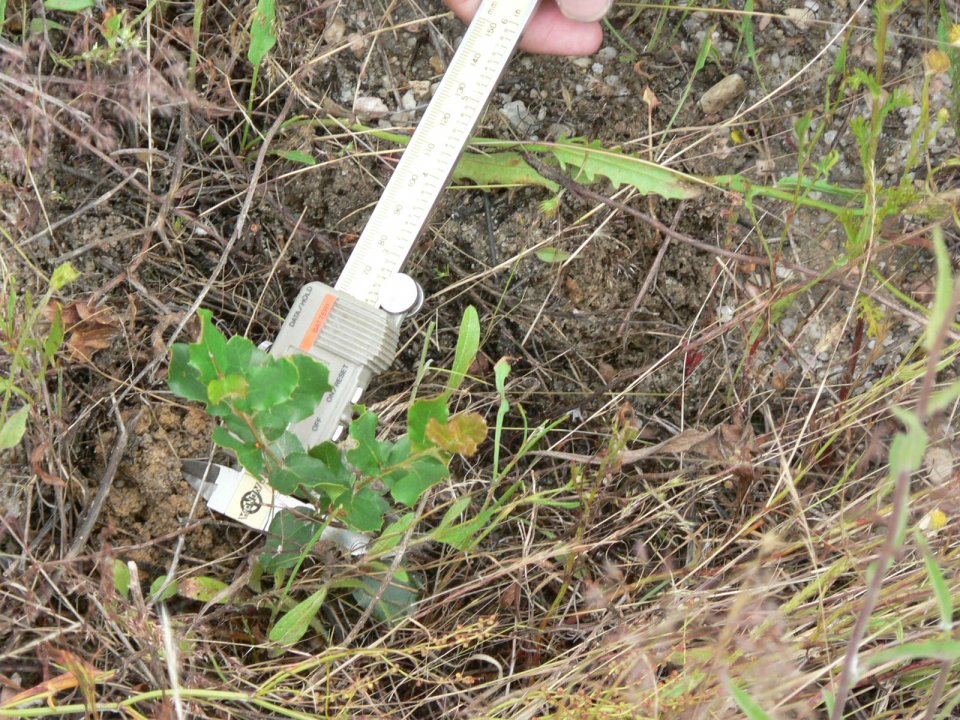
Environmental conditions have a great effect on regeneration, especially in arid or semi-arid ecosystems, such as the Mediterranean basin. In these systems the plants suffer a high water stress during the summer, due to the reduced availability in water and the high temperatures, which are limiting for the survival of the natural regeneration. Knowing the factors that influence the success of regeneration and what techniques currently exist to enhance its occurrence, are tools to support the management of the cork oak forests, ensuring the long-term sustainability.
Regeneration depends on favorable conditions for flowering, pollination and seed maturation, aspects in which the climate plays a fundamental role. The success of regeneration is conditioned by the abundance of viable seed production, the dispersion and germination of acorns, the establishment of seedlings and their development until maturity (figure 2). At the end of winter, in agro-forestry systems, most of the acorns under the tree crowns were already consumed by the various predators present (wild boar, mices, cows, birds, insects...) with little left to ensure the recruitment.
Conditions harmful to natural regeneration: soil mobilization; absence of regeneration protection under grazing; reduced number of trees in reproductive age (aged stands with a single age class); high degree of coverage by xerophytic shrubs, like Cistus sp.
Shrubs can facilitate recruitment of the cork oak, but their protective effect depends on the species present and the environmental conditions.
Facilitation occurs in areas of clearing or very sparse stands. If, in areas of abundant shrubs, the acorn may not be able to germinate due to lack of light and water, in the exposed areas, solar radiation and the potential for evapotranspiration can be limiting to germination and development. The shrubs shading decreases these stress conditions.
In abandoned cork oak forests, management should promote the opening of clearings creating opportunities for the establishment of the natural regeneration;
Areas without grazing for long periods of time (15-20 years) increase the potential for natural regeneration by decreasing the predation effect on existing seeds and young plants;
The creation of set-aside areas, will lead to shrubs development that will be able to protect the acorns and the recruitment of new plants;
Individual protection of young plants, with net protectors, reduces the risk of predation by grazing or damage by trampling;
Shrub control should preferably be carried out using techniques that do not mobilize the soil, namely with shrub cutters.
The lack of natural regeneration is one of the main threats to the cork oak forests, where the vitality loss concerns not only the increase in tree mortality but also higher difficulty to assure regeneration (natural or artificial).
Most of the techniques to promote natural regeneration imply medium to long term strategies in terms of forest management, and without strong evidences for success, the managers still resist in its application. Financial supports are needed to compensate additional or changes in the operations (disc ploug to shrub cutter for example) and loss of income from set aside areas.
An Operational Group named OakRegeneration, leaded by INIAV - Instituto Nacional de Investigação Agrária e Veterinária is currently underway dedicated to the cork and holm oak regeneration establishment study. The goal is to implement, at the farm level, appropriate management practices to: i) Take advantage and manage the areas of natural regeneration that occur spontaneously in their oak forests ii) Systematize local conditions favorable to the appearance of areas of regeneration and replicate them in other potential areas.
Conceição Santos Silva, mcssilva@unac.pt, www.unac.pt
Further information
- Aronson, J.; Santos Pereira, J.; Pausas, J.G. (Eds), 2009 - Cork Oak Woodlands on the Edge – Ecology, Adaptative Management, and Restoration. Island Press
- Caldeira, M.C.; Ibáñez, I.; Nogueira, C.; Bugalho, M.; Lecomte, X.; Moreira, A.; Santos Pereira, J., 2014 - Direct and indirect effects of tree canopy facilitation in the recruitment of Mediterranean oaks. Journal of Applied Ecology 2014, 51, 349-358.
- Correia, A.; Santos Pereira, J.; Silva, F.C.; Almeida, M.H.; Pinheiro, C.2015 - Vitalidade do Sobreiro. Revisão do conhecimento. FILCORK.
- Dias, F.; Miller, D.L.; Marques, T.A.; Marcelino, J.; Caldeira, M.C.; Cerdeira, J.O.; Bugalho, M.N., 2016 - Conservation zones promote oak regeneration and shrub diversity in certified. Mediterranean oak woodlands. Biological Conservation 2016, 195, 226 – 234. · March 2016
- http://www.oakregeneration.pt/pt/
APFC - Coruche Private Landowners Forest Association

In figure 2, the blue lines represent the pathway to the sucessfull natural regeneration and the red lines represent several factors that contribute to the regeneration failures. Source: Aronson, 2009.
